TANIA ROMERO,
LOS ANGELES SUPER STEWARD
Rio de los Angeles
By Hannah Flynn & Daniela Velazco
former Test Plot interns
![]()
LOS ANGELES SUPER STEWARD
Rio de los Angeles
By Hannah Flynn & Daniela Velazco
former Test Plot interns
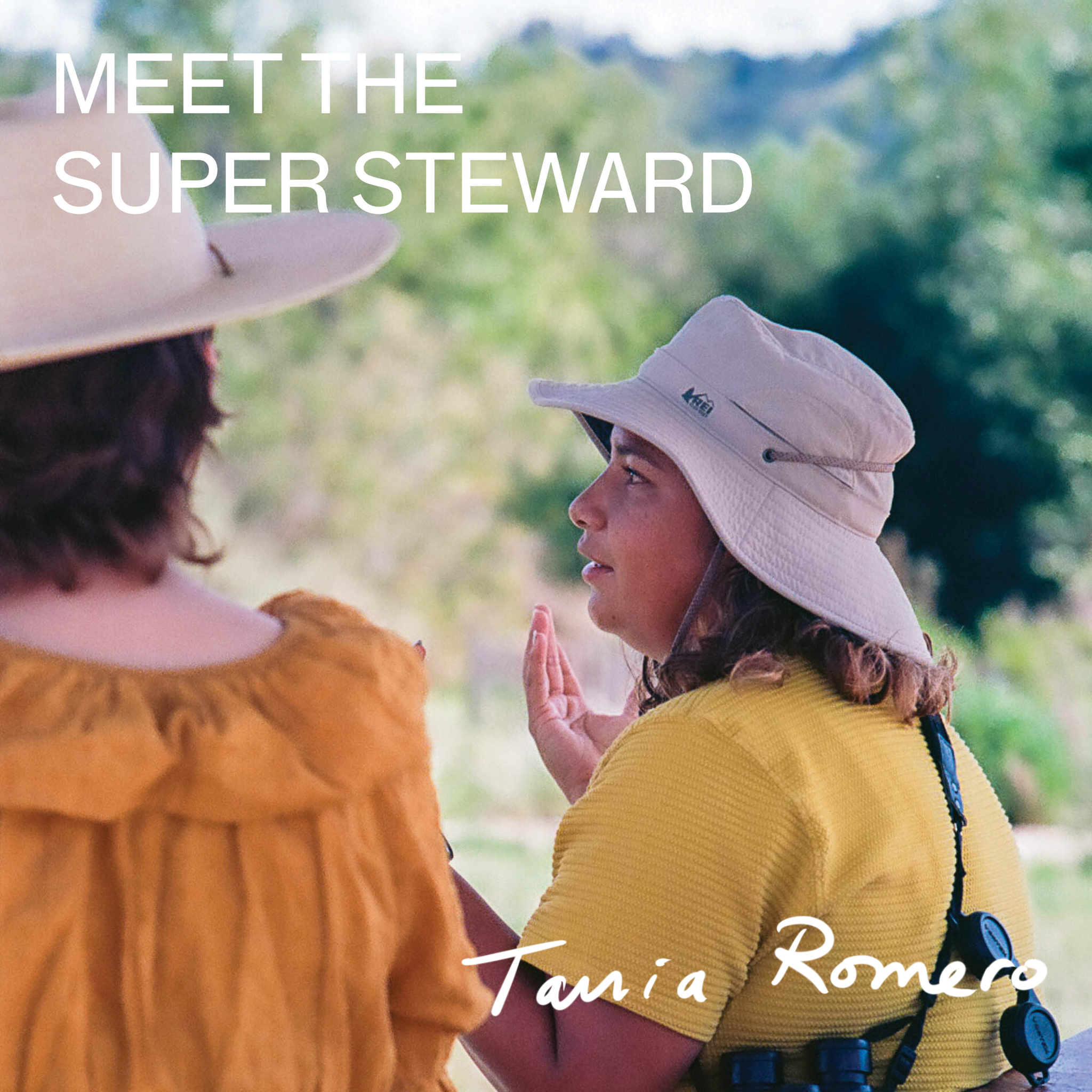
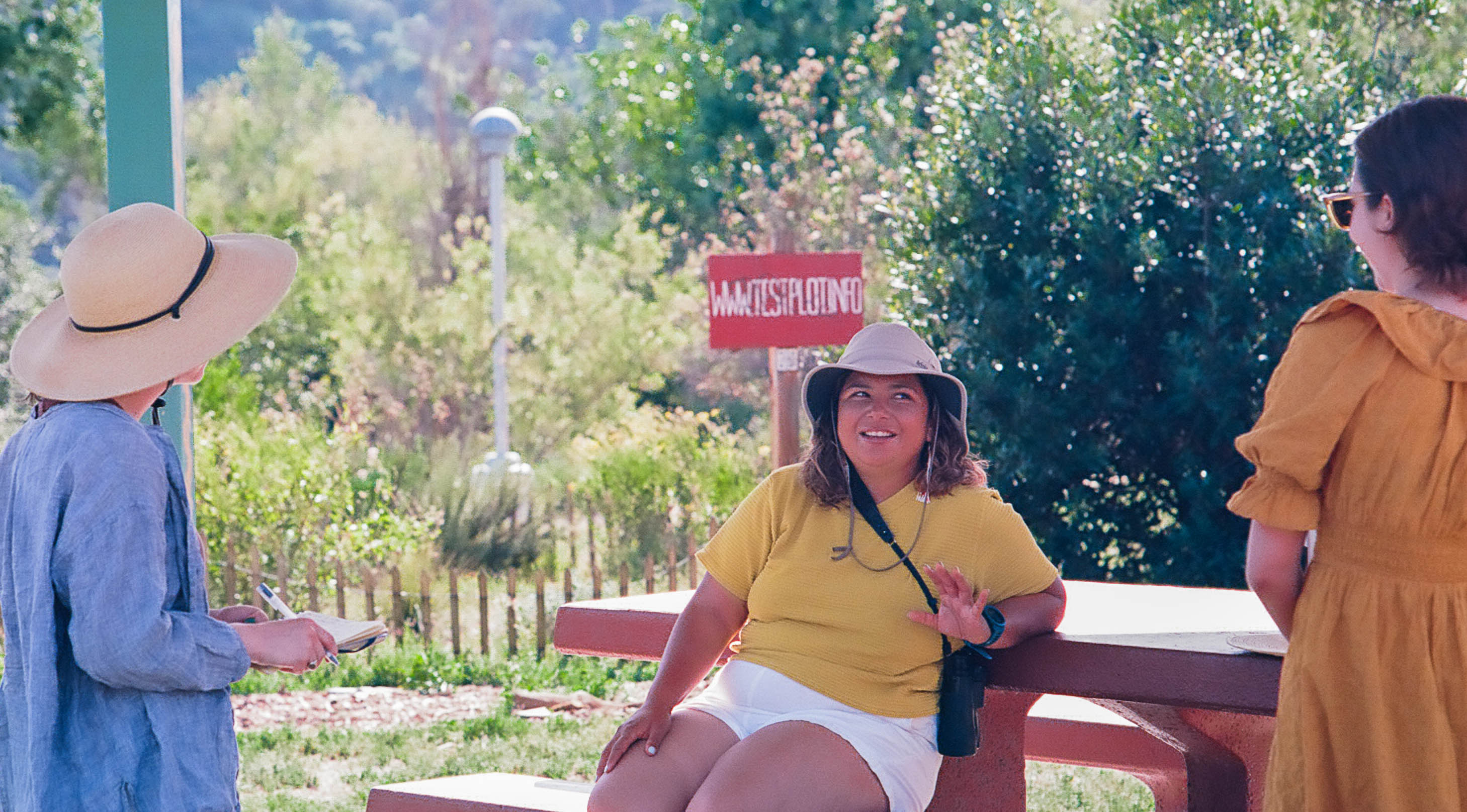
We met Tania Romero at the Rio de Los Angeles State Park Test Plot on a sunny spring day. While Tania played an important role in shaping the plant palette for the naturalized portion of the park, our conversation with her focused on a different subject; who makes up arguably one of the biggest groups of the park’s users: the birds. When developing the plant palette, Tania researched what plant and bird species could be found within a 5-mile radius of the park, and went from there.
Tania works as an environmental consultant, performing bird surveys for electrical pole replacement operations, making sure that a pole due for maintenance is not the current home of nesting birds or any species with special status. The beauty of consulting, she explains, is its flexibility: while she’s “more of a bird person”, she also gets to learn about mammals and plants, and how they all fit into the whole picture.

Tania has always been curious about how the whole picture comes together. Growing up in South Central, there wasn’t much nature around, she recounted. Her mom believed nature was important to experience, so many of her foundational childhood experiences involved trips to places like Pasadena and Azusa, to experience the mountains and rivers. Once, on a trip to the San Diego Zoo, Tania saw a monkey climb on a hippo’s back. This small interaction grew into a bigger curiosity in college - why do animals behave the way they do?
In the outdoors and conservation field in general, Tania always felt like an outsider. She often found herself reflecting on her childhood experience and questioning “Why was there limited green space and nature where she was raised in south central Los Angeles?“ As she got deeper into her studies, she came across environmental racism and began to understand why. She also found herself dwelling further into social justice including worker’s rights, gender and sexuality issues, and racism. Although she had a passion for conservation, she found herself questioning how she focused on conservation when there were multiple other social issues that impacted her everyday life and her community.

Currently, Tania runs a bird banding station at Bear Divide, in the foothills of the Angeles National Forest. Accessible only by car, the station is anything but immediately located for most people and station visitors. The greater Bear Divide area is used by dedicated birders and hikers. For many of people visiting the station, it is their first time touching birds or seeing them up close. Her long-term dream is to open a bird observatory that balances community and research.
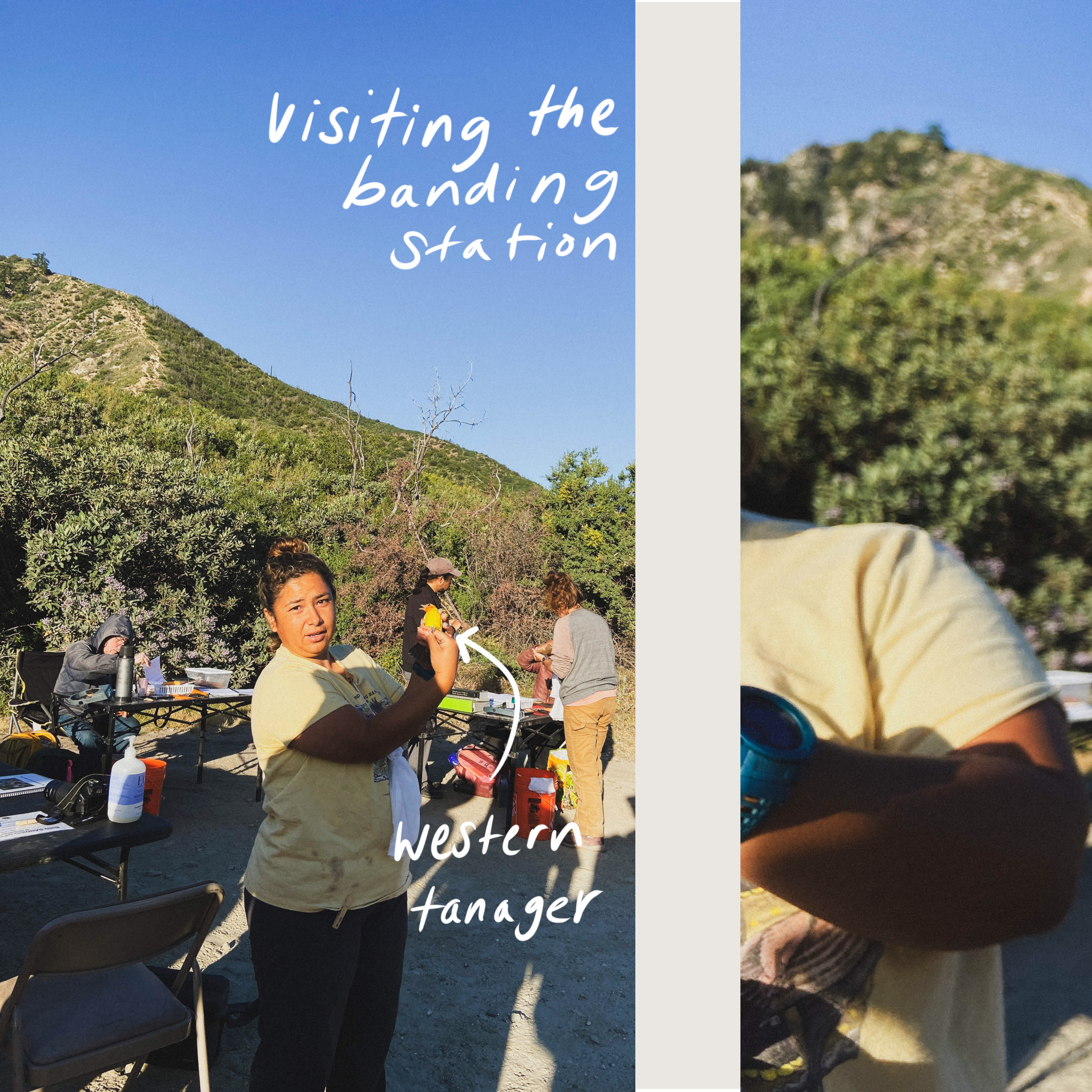
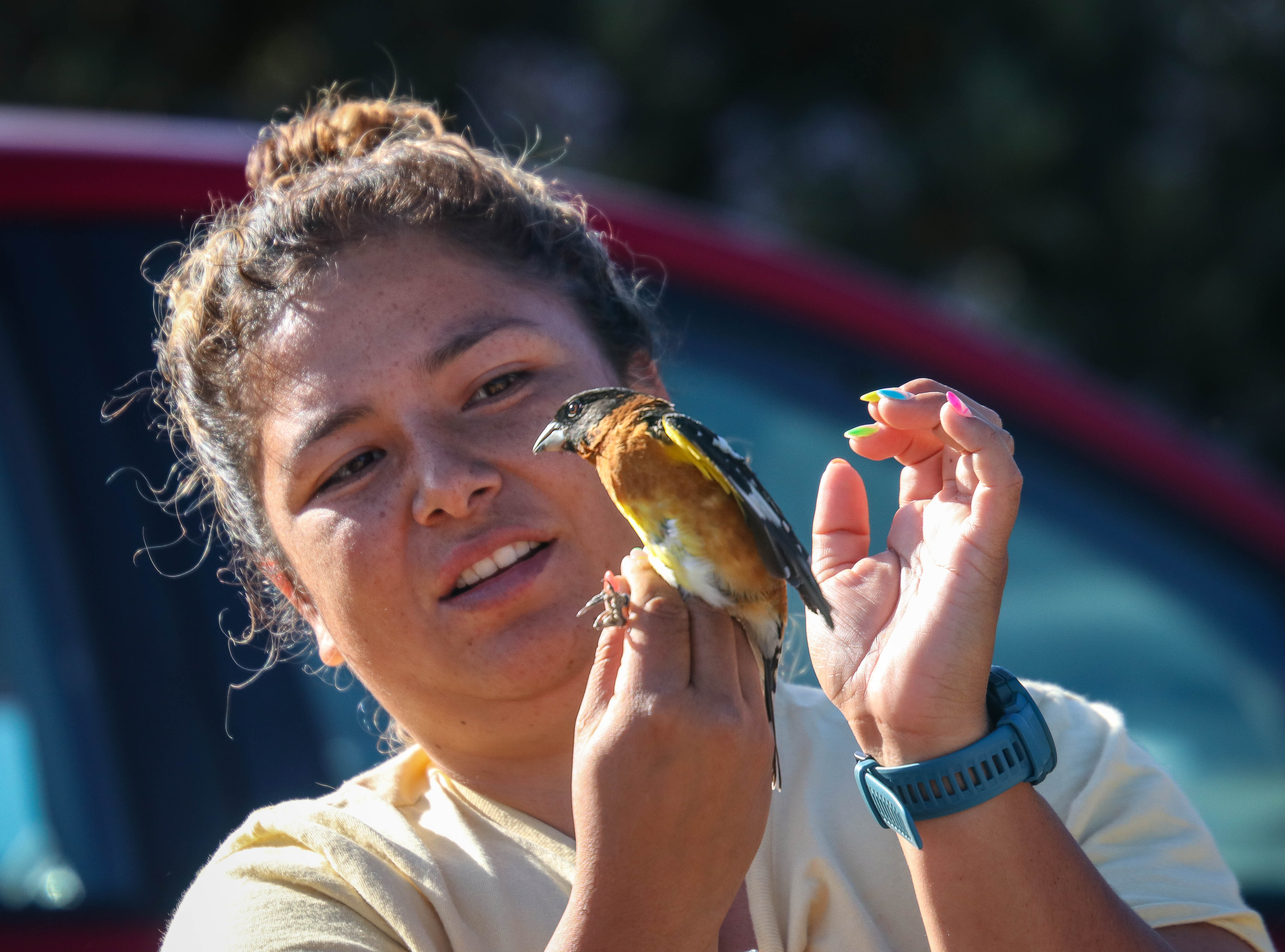
Balancing community and science is a challenge, she tells us, as people often underestimate the work that goes into building a sense of stewardship. Building a relationship with volunteers and the community should be intentional. For example, for restoration events that require volunteers, we should ask “ Why should someone volunteer at this event and work this land?” Tania suggests reaching out to local partnerships that are already involved in the community or within the community such as community partners and schools, to build mutual understanding and deliver a message with a foundation of trust and understanding. Building trust however is work, often becomes an afterthought, and is reduced to posting a flier in hopes that the right people will see it. Or worse, she explains: as a person of color, employers will expect her to “know diversity” and will throw inclusion work to her even when it is not part of her job card.
But to take the effort to engage people - to understand their wants and needs, and to teach them how they relate to nature - is absolutely worth it, she explains. One of the most validating experiences is when volunteers show up, especially repeatedly, because then it’s clear that the work means something to everyone involved. Her goal is to branch out of common narratives of conservation, to value and incorporate new narratives and new sources of knowledge when it comes to restoration work. By incorporating new narratives and accepting new experiences, we become more inclusive of everyone in the community. One example in restoration work is including the stories of gardeners, farmers, and Indigenous people who know so much about how the land works - but because they may not have the specific vocabulary associated with restoration work, their knowledge is overlooked.
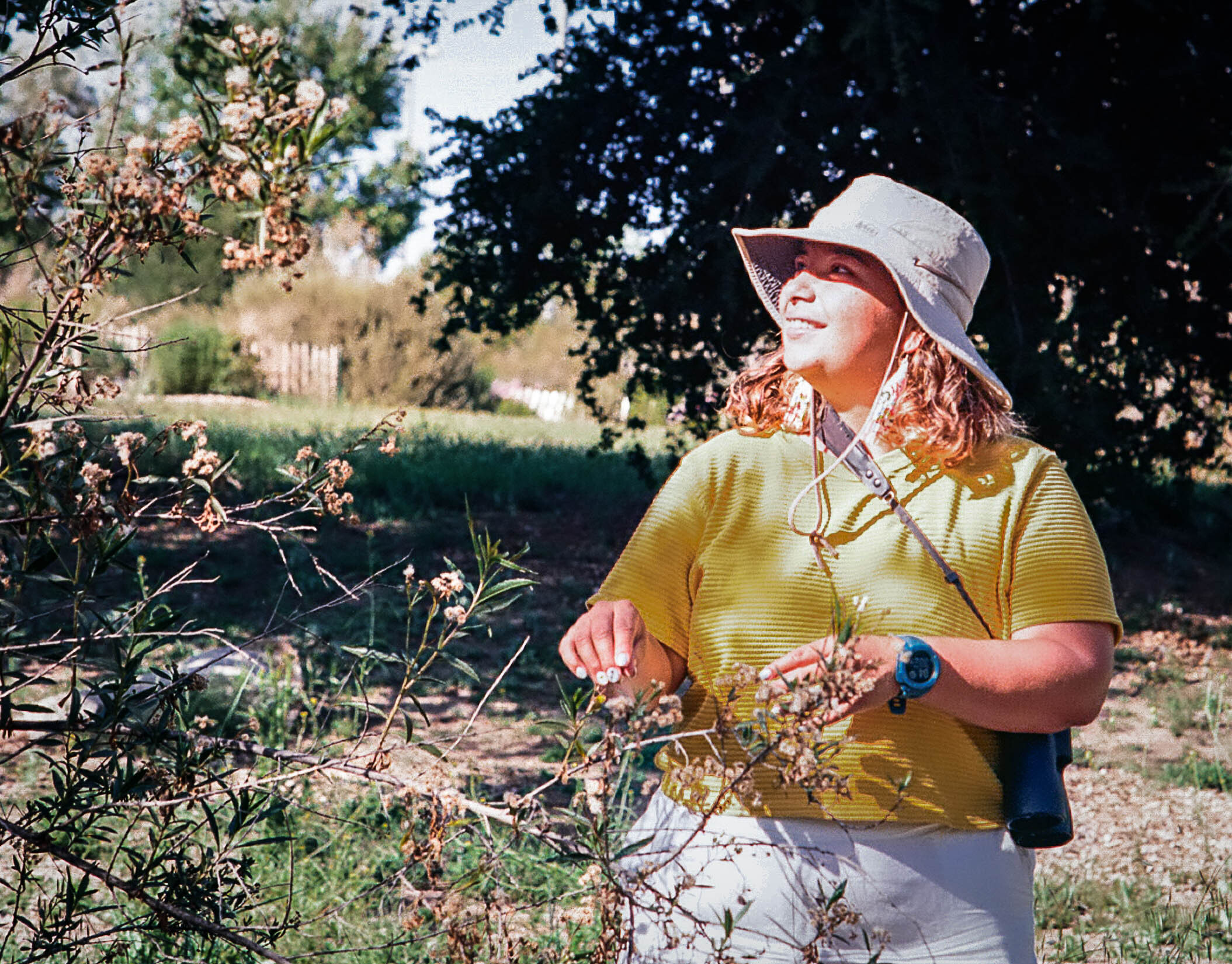
Not only does Tania hope that this evolving model of restoration and stewardship will become more and more prevalent - she is actively working to make it happen. When asked who she would like to share her restoration work with, her answer looked towards the past: she would want to share it with her grandmother, who passed away when Tania was 10 years old. Tania’s family members in Mexico have told her that her grandmother was just like her - she loved birds and bright colors. She would want to share this understanding with her grandmother, and maybe gain some understanding in return - about how we have built this passion and love in our veins.
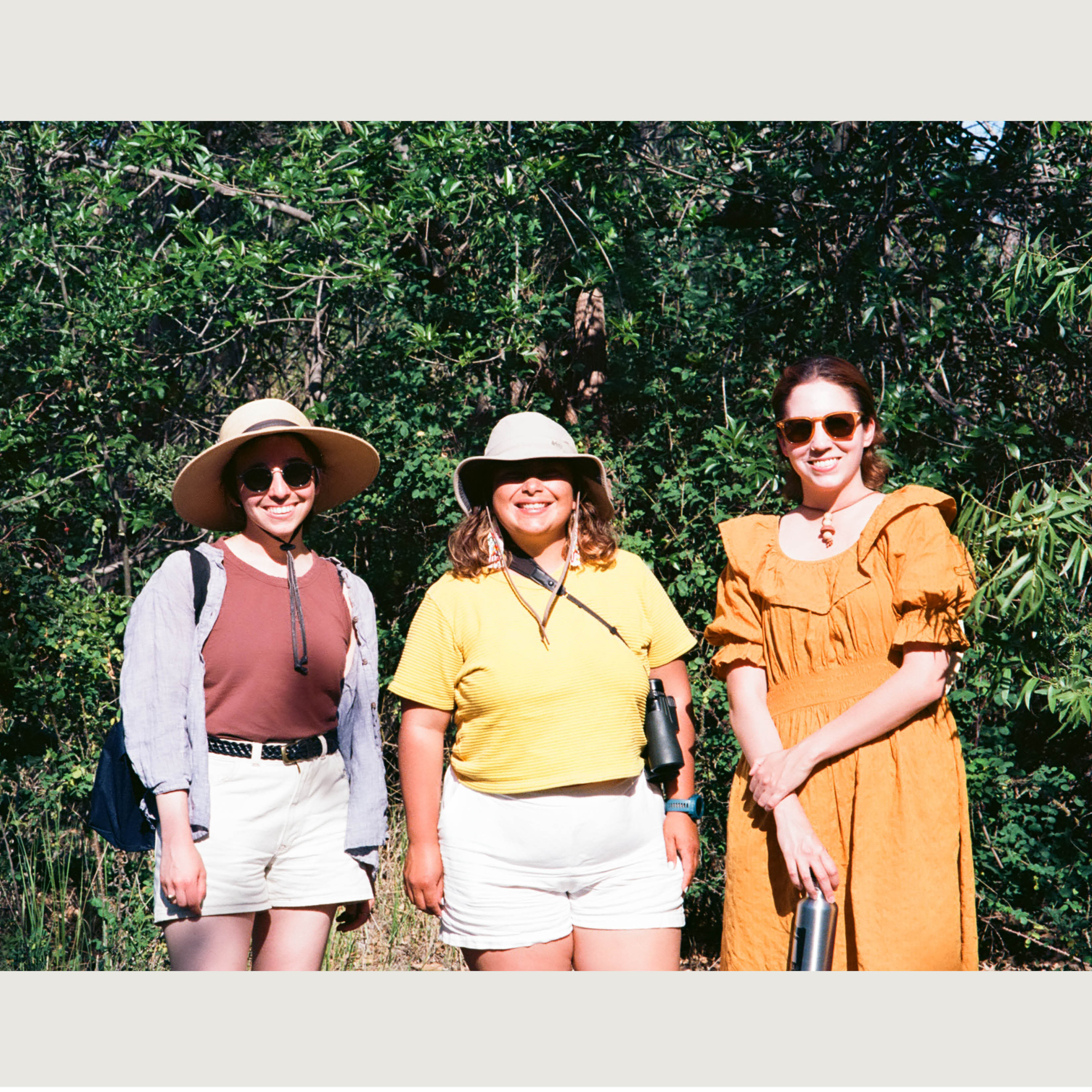 Thanks so much for sharing your story with us Tania!
Thanks so much for sharing your story with us Tania! Photos by the talented Robert Flynn
DANTE INIGUEZ + ANTHONY MARTIN,
LOS ANGELES SUPER STEWARDS
Elysian Park
By Daniela Velazco & Hannah Flynn
current and former Test Plot interns
We are Dani and Hannah, current and former Test Plot interns. Starting in early 2022, we conducted a series of seven interviews with “Super Stewards” - members of the Test Plot community who are stewards of community and of the environment. Our conversations covered personal histories, what it means to be a steward, and what the future of community-tended green space can be.
![]()
We met Dante Iniguez and Anthony Martin at the Elysian Park Test Plot on a chilly late afternoon as they were watering what was at the time the newest plot, a plot mostly filled with wildflowers grown from seed. Dante and Anthony are more than regular volunteers at Elysian Park - their reliable presence is a pillar of the Test Plot.
![]()
Dante, a designer, and Anthony, a microbiologist, live in an apartment together with no room for a garden to tend to. Dante spent formative years in San Luis Obispo, where widespread native plants and protected nature areas instilled a deep appreciation for the nature of California. Anthony’s parents, immigrants from the Philippines, took him camping frequently throughout the state as a child. His father developed his own deep connection to the land by studying agriculture, a connection that was practically “genetically transferred” to Anthony, citing his father’s own interest in agriculture.
![]()
They were both drawn to the opportunity to be outdoors and work with people with similar values to theirs. In spending so many hours working, they quickly bonded with the plots. Dante’s reasoning behind his choice of favorite plant in the plots, the Manzanita, reflects this: they are “really sculptural, beautiful….[and] unique”, but they also take a long time to grow”.. Anthony’s favorite part of the plots isn’t a plant, but the whole picture - including the soil in which the plants grow. He’s “excited by…the idea of creating habitat and returning the land to how it needs to be.” He draws a comparison with his work studying gut microbiomes: like our own digestive systems that power us, “there’s a whole ecology of microbiomes that affect the soil’s health.”
Spending quality hands-on time with the plots has taught them a lot. Anthony feels that he’s getting to see the life he studies in the lab “being its full self outdoors”, understanding how plants interact with each other and with the climate. Test Plot has become like “a game”, experimenting with parameters like pH and soil composition to see how plants will grow – or not. And it’s not just the volunteers who get to learn: as people walk by, they get curious and ask about them. These interactions have the potential to be valuable opportunities to help people who aren’t as exposed to ecology “understand the value of what [Test Plot is about] and why native plants are better than other plants.”
![Wild mustard growing on the hill]()
![Test Plot planted with native species]()
Dante and Anthony strongly believe exposure leads to understanding, which leads to an appreciation of ecological systems much larger than the Test Plots themselves: a greater understanding of how our gardens connect to the broader ecological context of the city, to “our food systems, the clothes we wear, and where [that all] is coming from.” An understanding that our plant palettes “can be aesthetic and still building an ecology.”
![]()
Who would benefit from this hands-on exposure? A lot of people are already showing their desire to work with plants, say Dante and Anthony, citing beautiful balcony gardens that they’ve noticed hanging down from apartment balconies throughout the city. If apartment gardeners had a plot to care for, they would bond to it, just like Dante and Anthony did. Neglected public spaces - like the mustard-filled spots at Elysian before the plots were established - are a “missed opportunity to give the land back to the people” so that they can get their hands dirty and build that connection, plant by plant.
![]() Thank you, Anthony and Dante
Thank you, Anthony and Dante
Photos by Robert Flynn
LOS ANGELES SUPER STEWARDS
Elysian Park
By Daniela Velazco & Hannah Flynn
current and former Test Plot interns
We are Dani and Hannah, current and former Test Plot interns. Starting in early 2022, we conducted a series of seven interviews with “Super Stewards” - members of the Test Plot community who are stewards of community and of the environment. Our conversations covered personal histories, what it means to be a steward, and what the future of community-tended green space can be.

We met Dante Iniguez and Anthony Martin at the Elysian Park Test Plot on a chilly late afternoon as they were watering what was at the time the newest plot, a plot mostly filled with wildflowers grown from seed. Dante and Anthony are more than regular volunteers at Elysian Park - their reliable presence is a pillar of the Test Plot.
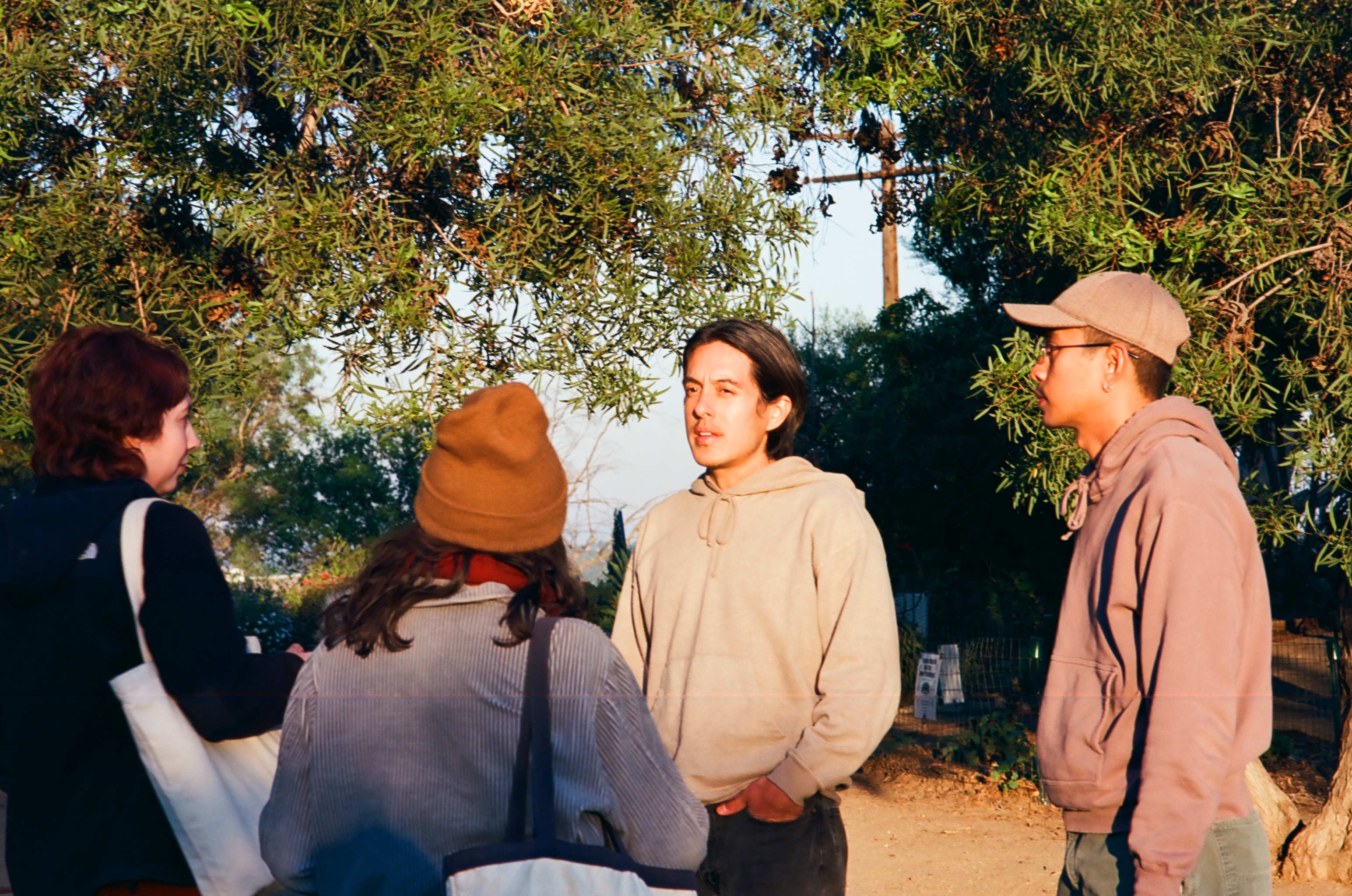
Dante, a designer, and Anthony, a microbiologist, live in an apartment together with no room for a garden to tend to. Dante spent formative years in San Luis Obispo, where widespread native plants and protected nature areas instilled a deep appreciation for the nature of California. Anthony’s parents, immigrants from the Philippines, took him camping frequently throughout the state as a child. His father developed his own deep connection to the land by studying agriculture, a connection that was practically “genetically transferred” to Anthony, citing his father’s own interest in agriculture.

They were both drawn to the opportunity to be outdoors and work with people with similar values to theirs. In spending so many hours working, they quickly bonded with the plots. Dante’s reasoning behind his choice of favorite plant in the plots, the Manzanita, reflects this: they are “really sculptural, beautiful….[and] unique”, but they also take a long time to grow”.. Anthony’s favorite part of the plots isn’t a plant, but the whole picture - including the soil in which the plants grow. He’s “excited by…the idea of creating habitat and returning the land to how it needs to be.” He draws a comparison with his work studying gut microbiomes: like our own digestive systems that power us, “there’s a whole ecology of microbiomes that affect the soil’s health.”
Spending quality hands-on time with the plots has taught them a lot. Anthony feels that he’s getting to see the life he studies in the lab “being its full self outdoors”, understanding how plants interact with each other and with the climate. Test Plot has become like “a game”, experimenting with parameters like pH and soil composition to see how plants will grow – or not. And it’s not just the volunteers who get to learn: as people walk by, they get curious and ask about them. These interactions have the potential to be valuable opportunities to help people who aren’t as exposed to ecology “understand the value of what [Test Plot is about] and why native plants are better than other plants.”
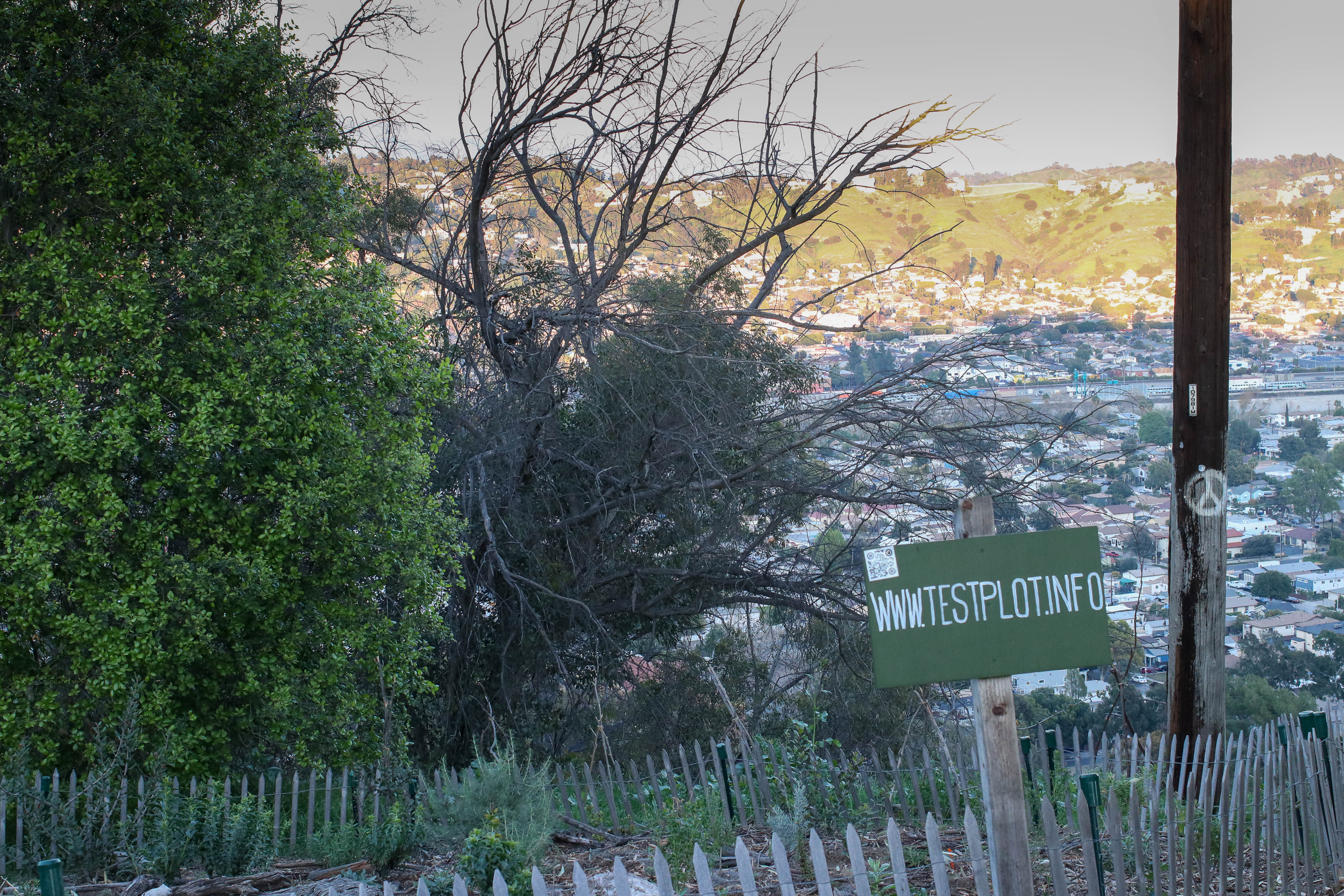
Dante and Anthony strongly believe exposure leads to understanding, which leads to an appreciation of ecological systems much larger than the Test Plots themselves: a greater understanding of how our gardens connect to the broader ecological context of the city, to “our food systems, the clothes we wear, and where [that all] is coming from.” An understanding that our plant palettes “can be aesthetic and still building an ecology.”
Who would benefit from this hands-on exposure? A lot of people are already showing their desire to work with plants, say Dante and Anthony, citing beautiful balcony gardens that they’ve noticed hanging down from apartment balconies throughout the city. If apartment gardeners had a plot to care for, they would bond to it, just like Dante and Anthony did. Neglected public spaces - like the mustard-filled spots at Elysian before the plots were established - are a “missed opportunity to give the land back to the people” so that they can get their hands dirty and build that connection, plant by plant.
 Thank you, Anthony and Dante
Thank you, Anthony and DantePhotos by Robert Flynn
LUIS RINCON, SUPER STEWARD
Rio de Los Angeles State Park
By Hannah Flynn & Dani Velazco
current and former Test Plot interns
Starting in early 2022, we conducted a series of seven interviews with “Super Stewards” - members of the Test Plot community who are stewards of community and of the environment. Our conversations covered personal histories, what it means to be a steward, and what the future of community-tended green space can be.
![]()
![Meet Luis Rincon, State Parks Community Engagement Coordinator]() Photos by Robert Flynn
Photos by Robert Flynn
Rio de Los Angeles State Park wasn’t always a park. For a long time, it was part of the Los Angeles River floodplain and agricultural fields. That is, until the massive Taylor Yard rail yard was constructed, roughly coinciding with the concretization of the Los Angeles River. It was operated as a rail yard until 1985, when it closed operations. To learn the story of how Rio became a park, we met with Luis Rincon, State Parks Community Engagement Coordinator, on an unusually warm and sunny winter day. We sat down together near the Test Plot, in the grass, soaking up the sun. According to Luis, the abuelas del Rio, longtime residents of the neighborhood and park volunteers, are to thank for their dedicated advocacy work to turn the brownfield into a park for their grandchildren to play.
The location was perfect: because of its proximity to the river, it could connect kids to the river, its ecology, and its part of the city’s history. The abuelas found an opportunity with California State Parks to turn this parcel of land into a park because of its significant natural value as a riparian zone. However, the abuelas and other community groups also wanted to have soccer fields and basketball courts, which State Parks does not administer, so the park is run as a partnership between the City of Los Angeles and State Parks.
Luis noted that on the administrative side, State Parks was keenly aware of a statewide relevancy problem: the people visiting their parks didn’t reflect the rich diversity of the state. The advocacy work of the abuelas aligned perfectly with State Parks’s own initiative to build more urban parks to “bring parks to the people.” As Luis started with State Parks, he was drawn to Rio because of the abuelas’ passion and vision of green space for their community. Getting to meet them and work with them was inspiring. “I remember when I first got here, everything in the landscape was small,” he recounted, underscored by the dappled shade provided by the now-mature toyon we sat beneath.
A native Angeleno himself, his connection to the outdoors began with family camping trips up near Yosemite. One of his earliest memories was jumping on a log and falling into a creek, a memory he associates with happy senses of freedom and being with family. Growing up in Northeast LA, Luis served as a community ambassador as part of a program called the Conservation Career Development Program (CCDP), a Student Conservation Association (SCA) program serving inner-city youth. Wanting to give back to his community, he switched to social work following college graduation. Eventually, he came to the realization that while social work was important and effective, community health is inextricably linked to open, green space, which brought him back to working with nature. And while situated in an urban setting, Rio’s 20 acres of nature is just enough to provide human health benefits and habitat benefits, such as creating habitat for an endangered bird, the Least Bell’s Vireo.
Working as an Community Engagement Coordinator for State Parks, Luis is able to build community and expand who gets to benefit from access to nature. He insists that he can’t do it alone, that it’s “always about finding the right partners who have aligned thinking.” Through partnerships with organizations such as the Audubon Society and Test Plot, he’s able to organize more resources for the community, in turn strengthening the community’s relationship with the park. “It’s not just about parks, it’s about the people. The abuelas didn’t know that they would set 100 acres [as in the 100 Acre Partnership] in motion in Los Angeles where real estate is at a premium…it is always about just taking that first step.” The abuelas could not have imagined the long-term impacts to the nation’s second-largest city that their green advocacy work catalyzed.
Rio de Los Angeles State Park
By Hannah Flynn & Dani Velazco
current and former Test Plot interns
Starting in early 2022, we conducted a series of seven interviews with “Super Stewards” - members of the Test Plot community who are stewards of community and of the environment. Our conversations covered personal histories, what it means to be a steward, and what the future of community-tended green space can be.

 Photos by Robert Flynn
Photos by Robert FlynnRio de Los Angeles State Park wasn’t always a park. For a long time, it was part of the Los Angeles River floodplain and agricultural fields. That is, until the massive Taylor Yard rail yard was constructed, roughly coinciding with the concretization of the Los Angeles River. It was operated as a rail yard until 1985, when it closed operations. To learn the story of how Rio became a park, we met with Luis Rincon, State Parks Community Engagement Coordinator, on an unusually warm and sunny winter day. We sat down together near the Test Plot, in the grass, soaking up the sun. According to Luis, the abuelas del Rio, longtime residents of the neighborhood and park volunteers, are to thank for their dedicated advocacy work to turn the brownfield into a park for their grandchildren to play.
The location was perfect: because of its proximity to the river, it could connect kids to the river, its ecology, and its part of the city’s history. The abuelas found an opportunity with California State Parks to turn this parcel of land into a park because of its significant natural value as a riparian zone. However, the abuelas and other community groups also wanted to have soccer fields and basketball courts, which State Parks does not administer, so the park is run as a partnership between the City of Los Angeles and State Parks.
Luis noted that on the administrative side, State Parks was keenly aware of a statewide relevancy problem: the people visiting their parks didn’t reflect the rich diversity of the state. The advocacy work of the abuelas aligned perfectly with State Parks’s own initiative to build more urban parks to “bring parks to the people.” As Luis started with State Parks, he was drawn to Rio because of the abuelas’ passion and vision of green space for their community. Getting to meet them and work with them was inspiring. “I remember when I first got here, everything in the landscape was small,” he recounted, underscored by the dappled shade provided by the now-mature toyon we sat beneath.
A native Angeleno himself, his connection to the outdoors began with family camping trips up near Yosemite. One of his earliest memories was jumping on a log and falling into a creek, a memory he associates with happy senses of freedom and being with family. Growing up in Northeast LA, Luis served as a community ambassador as part of a program called the Conservation Career Development Program (CCDP), a Student Conservation Association (SCA) program serving inner-city youth. Wanting to give back to his community, he switched to social work following college graduation. Eventually, he came to the realization that while social work was important and effective, community health is inextricably linked to open, green space, which brought him back to working with nature. And while situated in an urban setting, Rio’s 20 acres of nature is just enough to provide human health benefits and habitat benefits, such as creating habitat for an endangered bird, the Least Bell’s Vireo.
Working as an Community Engagement Coordinator for State Parks, Luis is able to build community and expand who gets to benefit from access to nature. He insists that he can’t do it alone, that it’s “always about finding the right partners who have aligned thinking.” Through partnerships with organizations such as the Audubon Society and Test Plot, he’s able to organize more resources for the community, in turn strengthening the community’s relationship with the park. “It’s not just about parks, it’s about the people. The abuelas didn’t know that they would set 100 acres [as in the 100 Acre Partnership] in motion in Los Angeles where real estate is at a premium…it is always about just taking that first step.” The abuelas could not have imagined the long-term impacts to the nation’s second-largest city that their green advocacy work catalyzed.



Thank you so much for sharing your time and experience with us, Luis!
MEET THE SUPER STEWARDS!
2022-2023
By Hannah Flynn & Dani Velazco
current and former Test Plot interns
We are Dani and Hannah, current and former Test Plot interns. Starting in early 2022, we conducted a series of seven interviews with “Super Stewards” - members of the Test Plot community who are stewards of community and of the environment. Our conversations covered personal histories, what it means to be a steward, and what the future of community-tended green space can be.
![]()
Once a month for the rest of the year, we are going to share write-ups, photos, and audio recordings of these conversations. This post will update whenever a new write-up is posted.
July 2023: Luis Rincon
August 2023: Dante Iniguez & Anthony Martin
![]()
![]()
![]()
![]()
Photos by Robert Flynn
2022-2023
By Hannah Flynn & Dani Velazco
current and former Test Plot interns
We are Dani and Hannah, current and former Test Plot interns. Starting in early 2022, we conducted a series of seven interviews with “Super Stewards” - members of the Test Plot community who are stewards of community and of the environment. Our conversations covered personal histories, what it means to be a steward, and what the future of community-tended green space can be.

Once a month for the rest of the year, we are going to share write-ups, photos, and audio recordings of these conversations. This post will update whenever a new write-up is posted.
July 2023: Luis Rincon
August 2023: Dante Iniguez & Anthony Martin
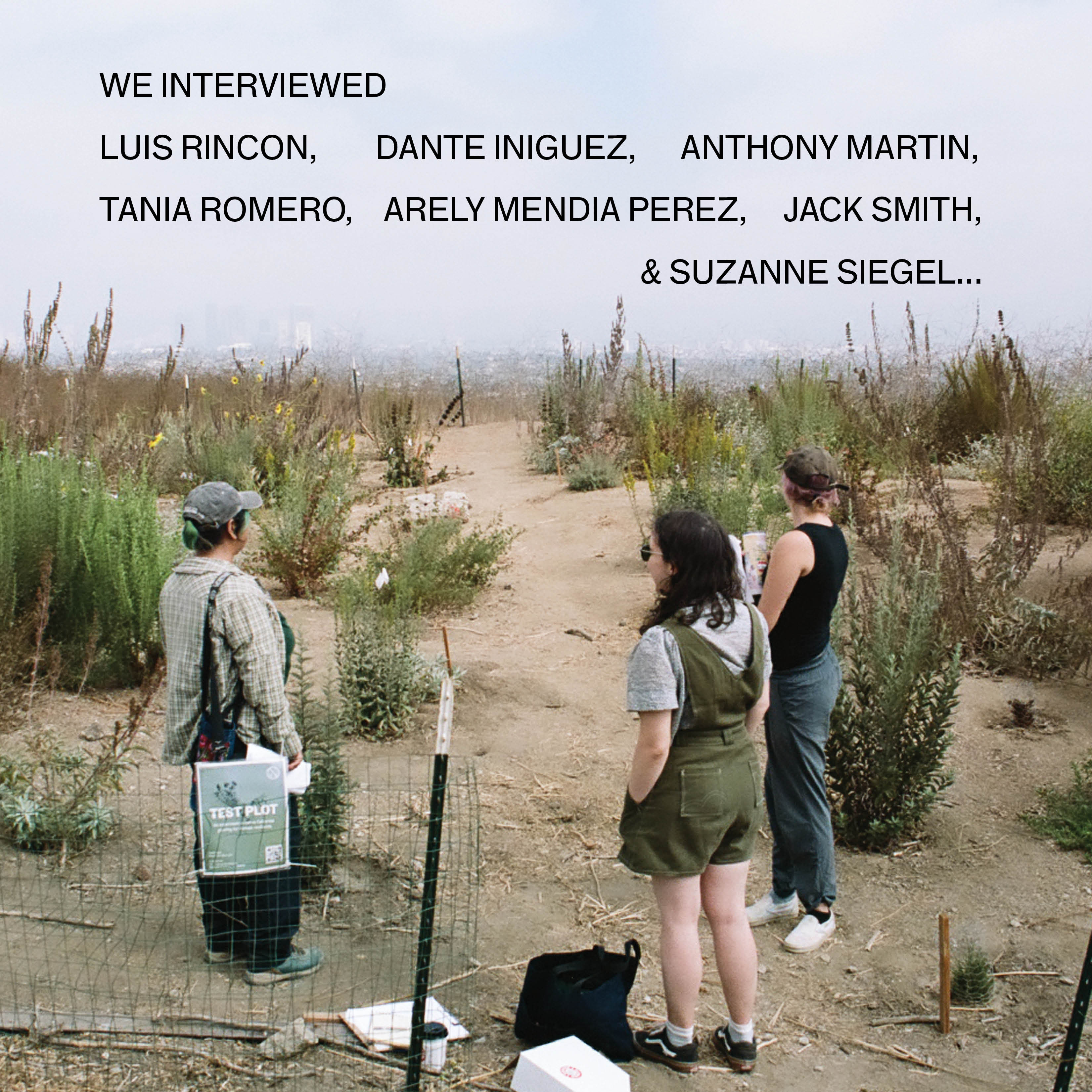


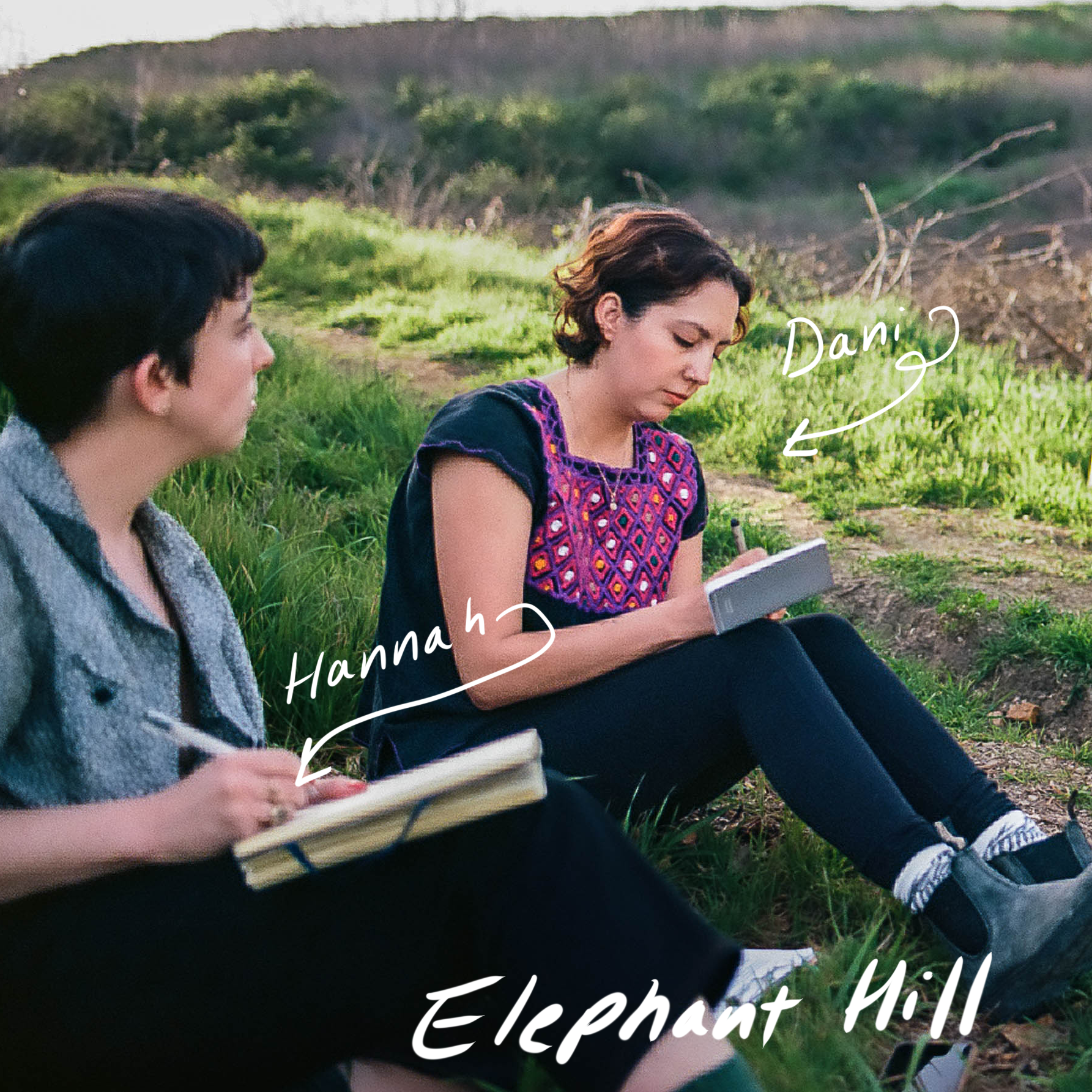
Photos by Robert Flynn
